The orphaning of the Palestinian cause
Sympathy for Palestine is abundant. Action is rationed. The politics to change this are always announced at summits
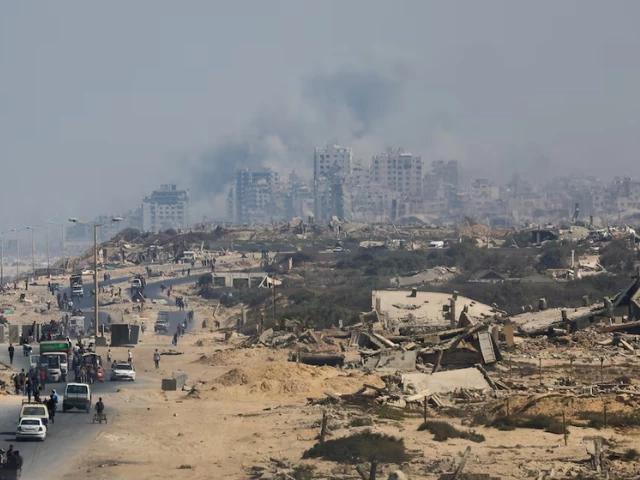
It is Monday, and the sun has not yet crested the horizon. Checkpoint 300 breathes in and out like a machine. The turnstile snags Ahmed’s coat; an IDF conscript waves him back; the green light sulks red. His permit is valid, which is different from useful. “Shoes off,” the soldier says.
Thirty minutes lost to a whim dressed as security, thirty minutes cut from a carpenter’s wage. This is policy at ground level: a pervasive system of population control that can confiscate time as easily as a pocketknife. On Tuesday, Ahmed is told his mother is ill in Shuʿfāt Camp. The route between son and mother is three bus rides and one miracle called tasrih – a Jerusalem entry permit summoned through the PA liaison, adjudicated by an office he will never see.
The clerk is polite in the way clerks are when they can do nothing: “Come back Thursday.” Everyone in the queue knows the subtext. Security alerts are up; men his age are “frequently denied.” The law he understands is simpler. Attempt the crossing without the slip, and you risk the work permit that feeds your family. On Wednesday, because Ahmed can’t get to his mother, he calls his sister instead.
A different gate, a harder wall. Her cousin’s exit permit to study abroad was refused for “security reasons”. Even if Ahmed could leave the West Bank, he could not enter Gaza, and she cannot leave it: Israel’s control over mobility in and out of the Gaza Strip has split a family into jurisdictions.
The One State Reality is not a slogan. It is a sorting machine, and it has already sorted them. On Thursday, Ahmed is desperate. A checkpoint blooms like a weed on the side road he uses to dodge the main crossing. An extra hour evaporates. On the bypass, settlers pass unimpeded, a small convoy slicing the landscape with right-of-way. The military orders that conjure these mobility regimes are written in the neutral argot of safety even as they carve unequal paths.
The decrees “do not apply to Israelis,” which is a tidy way of saying they apply to him. On Friday, the back twinge he’s been ignoring gets its vote. Ramallah’s clinic can do a scan next week; Augusta Victoria in Jerusalem could do it tomorrow, but tomorrow is a foreign country with gates. His cousin inside the Green Line will text later about a same-day slot at his HMO. “[Everyone inhabits] legal categories within a sophisticated, graded and racialized matrix of political membership,” wrote Barnett in The One State Reality.
The phrase is clinical, the ache is not. On Saturday afternoon, the phone rings from Gaza: electricity arrived, then left. News reports come in sluggishly – an airstrike near Rafah, a rumour about a crossing opening tomorrow. This particular rumour has a good attendance record and a poor memory. When asked if he believes it to be true, Ahmed says little because there is little to say that does not sound like desperation. On Sunday, the letter arrives. A notice slants in the mailbox: “address verification.” Bureaucracy has its own poetry – permanent resident, temporary permit, revocation – words that hold still while lives move around them.
In this order, the Palestinian Authority manages fragments of his day (a liaison window, a stamped form), but the system is owned elsewhere. Process overflows, prosperity remains scarce. Between Jordan and the sea, one hierarchy governs, and Ahmed’s week is its table of contents: movement as privilege, paperwork as fate, health as geography, family as separated files. Sympathy for Palestine is abundant. Action is rationed. The politics to change this are always announced at summits, the instruments to change this are always missing in the mail. In the One State Reality, the permanent is temporary, and the temporary is permanent.
What cages Ahmed is a century of design congealed in the shape of a single turnstile. From a map drafted in chancelleries to a sentence negotiated in 1967, from treasuries that buy quiet to armies built to guard palaces, from grand ideas that once bound a region to sect labels that now divide it, from a liberation movement turned subcontractor to a metropole that writes the menu of “reasonable”, his week is everything but an accident.
We start where his paperwork began: with the cartographers and custodians who tore states from nations – Sykes–Picot, the Mandates, Balfour – and with the legal grammar that still rules the calendar, that slippery clause in Resolution 242 whose ambiguity became policy. The promise is simple: we’ll read Ahmed’s week against the ledgers that govern it – imperial, legal, fiscal, military, ideological, and diplomatic. All this so we can ask: why does Palestine stand alone?
Part I — The cage is built
Start with the simple thing Ahmed knows: a gate can decide your day. Now take a step back. Who built the gate? After the First World War, Britain and France began the long process of manufacturing states. Lines first, nations later. Tutelary mandates put colonial administrators in charge of “civilising” political life, friendly dynasties were installed, minorities were balanced like counterweights, and into Palestine the Balfour Declaration wrote a “Jewish national home” over an already-inhabited land.
From birth, Palestinians were asked to live under a triple constraint: a metropole above them, a High Commissioner over them, and a powerful, internationally backed settler movement beside them. This is the operating system of the century that follows. Meanwhile the Mandate’s emergency toolkit turned politics into paperwork. 1936 to 1939 refined the techniques: administrative detention without trial, curfews, blacklists, “disturbed areas,” and movement by permit under a district commissioner’s eye. This is how a people become an administrative category, and why, a lifetime later, Ahmed learns that a document can override both reason and reality.
The Mandate taught a second habit: forums could absorb and neuter dissent as easily as they channelled it. In 1930, when a Palestinian delegation asked London for relief, the Colonial Secretary helpfully suggested they petition Geneva. ‘Auni ‘Abd al-Hadi captured it simply: “When we submit a petition there, the British Government answers it, and we are not represented.” Ahmed would recognise the tone: the office that hears you is not the place that decides. When Palestinians tried to force the issue from below – the 1936 General Strike and revolt – they pried loose a promise of yet another royal commission. Lord Peel was appointed to investigate the causes of conflict in Mandatory Palestine. Peel duly arrived with paper and partition.
The episode also revealed who heard early and who heard late. On the eve of publication, a British insider slid a draft of Peel’s recommendations across a Savoy Hotel table to Blanche Dugdale (who just happened to be the niece of former British Prime Minister Balfour), a key Zionist go-between who passed it on to the Jewish Agency. The Agency reviewed it and, with icy calm, decided it could “live with these recommendations.” Access is a structural edge that Zion was keen to capture, and British sympathisers were keener to grant.
Once you see the operating system, the next move makes sense. By the 1940s, Zionist institutions were counting what they intended one day to rule. Ezra Danin’s “village files” listed the husbandry of each hamlet, acreage and yields, groves (down to the trees), shop owners and artisans, clan splits and local politics, even the names of Palestinian civil servants. A society turned into a ledger, and the ledger became a target set.
Ahmed’s permit grid is the great-grandchild of that habit of mind: people as entries, movement as a field to be engineered. By early 1948, files and forums gave way to force, and the vocabulary hardened. As Plan Dalet matured, operational orders – “occupation, destruction and expulsion” – were paired with visits from political officers.
They demonised Palestinians and invoked the Holocaust to gird troops for what followed. The moral weather was set the night before. By afternoon, the houses were empty. The Nakba’s opening balance is grimly precise: roughly 700,000–800,000 Palestinians fled or were expelled between ‘47 and ’49 and hundreds of villages were erased from the map. By 1950, UNRWA was inventing itself to deal with the afterlife of those facts.
Today, roughly six million registered refugees are still on that ledger. The state that sprung from indiscriminate violence unleashed upon the Palestinians was secularsocialist in posture but ethno-legal in bone. Two statutes wrote the demographic contract in Israel: the Law of Return threw open the door to any Jew, everywhere; the Absentees’ Property Law locked it on Palestinians labelled “absent,” converting homes and groves into state assets by definition.
The same emergency reflex that the Mandate had perfected – curfew, permit, detention – remained on the shelf and was used domestically. Great-power geometry crowned the outcome. Partition (1947–49) enjoyed the rare harmony of the United States and the Soviet Union against a waning Britain; the security economy of the region shifted from imperial tutelage to a Cold War. Empire managing borders was replaced with superpowers managing clients.
Then Nasser nationalised the Suez, and routine disappeared into its waters. The British decided Nasser had grown too big for his britches and began drafting invasion plans with France and Israel. The British were confident that Eisenhower’s America would sit the conflict out.
Harold Macmillan, then a British cabinet minister and soon to be Prime Minister, stated upon his return to London, “I know Ike. Ike will lie doggo.” When push came to shove and the British and French tried to reassert the old terms by force, Washington refused to underwrite it. The lesson was clear and blunt: the empire that drew the map no longer held the pen.
From now on, Washington’s signature decided which lines were ink and which were pencil. And finally, 1967. Six days remade the map and the calendar: Sinai, Golan, East Jerusalem, the West Bank, Gaza – Israeli control extended over the whole territorial core. The diplomacy that followed installed a grammar of deferral.
UN Security Council Resolution 242 is the hinge to everything that follows. It opens with a principle anyone can understand – no one is allowed to seize land by war – and then moves to an operative clause written with lawyerly care: “withdrawal of Israeli armed forces from territories occupied in the recent conflict.” In English, the deliberate stripping of a single word – ‘the’ from ‘territories occupied’ – mattered. It left room to argue how much land, and which land, would be returned. In French, the equally ‘authentic’ text reads “retrait… des territoires occupés” – which in standard French legal drafting means all the occupied territories. Paris said so out loud in the Council.
But the negotiations had run in English, and London and Washington maintained that the English text governed, and that the extent of withdrawal would be negotiated ‘later’. The U.S. later summarised the position as allowing only ‘insubstantial’ adjustments to the 1967 lines, but adjustments nonetheless. Two equally authentic texts, only one became the steering wheel, the other the glove compartment. The result was a process – land for peace – in which the land would be specified later and Palestinian self-determination slid into the euphemism of a “refugee problem.” There is, inside this arc, a second story: the state remade Jews, too.
The Arab-Jewish Mizrahi rise in revot in Haifa after police shoot a Moroccan Jew. The riots begin with a body in a working-class quarter and unravel into a month of rage against the Labourist order; the Israeli Black Panthers, a Mizrahi protest movement that seeks to challenge Ashkenazi dominance, teach the country a new phrase for an old hierarchy and force Golda Meir to meet the boys she describes as hooligans and lawbreakers. Then 1977, the Mahapach, the Upheaval.
Gush Emunim, an ultranationalist, messianic Zionist settler movement, turned biblical geography into a ministry-friendly work plan. What once sounded like the fervour of a fringe becomes the template for “facts on the ground.” Likud rode the resentment, and the cosmology shifted: from the kibbutz’s universalist self-image to a coalition that calls piety authenticity and frontier justice security. When Labour goes and Likud arrives, the settlers step from the hillside into the cabinet room. The social basement moved first. The constitutional roof came later.
The project scales: from outpost to suburb, bypass roads to industrial parks, hilltops to belts. The 2018 Nation-State Basic Law, a quasi-constitutional law, degrades Arabic’s status and codifies “Jewish settlement” as a national value to be encouraged.
In 2023, when Israeli settlers wreak havoc across the Palestinian town of Huwara and burn it to the ground as IDF soldiers watch, the dead-eyed vulture Bezalel Smotrich says Huwara should have been “wiped out” anyway and grieves only the fact that ‘ordinary individuals’ did so before ‘the state’. No surprise, then, that in the twilight weeks of 2024, the EU counts north of seven hundred thousand settlers in the West Bank and East Jerusalem, spread across hundreds of settlements and outposts.
The present is the past made explicit. Settlements thicken into E-1 corridors, threading Ma’ale Adumim, a large settlement east of Jerusalem, to Jerusalem as Arabs are told to move again, this time with stamped ultimatums and bulldozers that work by night; the policy goal, “maximum land with minimum Arabs”, shows up in tenders, rezonings, and cabinet minutes more reliably than in speeches. If the old Zionism wanted European normalcy with a flag, the contemporary state prefers normalcy as annexation.
The iron wall is now an address, a ring road, a tax transfer held back until the Authority behaves. The idea of Israel evolves, but only into the policy it has always rehearsed. From here, the story shifts from maps and clauses to the Arab state system – rents, clients, the art of demobilisation, and militaries tuned to guard palaces rather than deter peer adversaries. Once we open that machinery, Ahmed’s week will not read as accident, but as fait accompli.
Part II — States That Can’t Act
The Arabs learned a simple rule of survival: keep external money calm, keep internal coalitions apart, and swap costly action for noisy substitutes. Arab budgets are built less on broad domestic taxation than on external rents. Oil and gas exports fund the treasury (Saudi Arabia, the UAE, Kuwait, Qatar, Oman, Bahrain; also Algeria, Iraq, Libya). Transit fees and foreign stipends do the rest (Egypt’s Suez Canal, US and Gulf support; Jordan’s aid, base rents, remittances).
Not every Arab state is a pure rentier state – Morocco, Tunisia, Lebanon are hybrids that import rentier reflexes when Gulf money arrives – but the capitals that set regional red lines mostly are. This single fact rewires politics. If you don’t tax people, you don’t need their organised leverage. If you don’t need their leverage, you buy their quiet. The budget’s lifeblood – hard currency from exports and patrons – must never be put at risk for long.
That is the first constraint. The second is domestic: Palestine is a cross-cleavage synchroniser. It fuses otherwise incompatible blocs – Islamists and liberals, students and unions, tribes and professionals – into one coalition. For the princes and presidents whose survival depends on segmented society and loyalist patronage, a fused coalition is existential risk.
There is also a patrons’ veto. Security guarantees, arms pipelines, IMF programmes, energy partnerships – these are the external veto players that underwrite the rentier bargain. A coercive move on Palestine that credibly threatens American or allied equities can summon sanctions, delays, blacklists, price shocks, or base politics.
Those costs feed straight back into the machine that buys quiet at home: the wage bill, subsidies, food and fuel prices, the peg. When foreign risk converts into fiscal shock, the regime’s core instrument – distribution – starts to fail. Hence the reflex to expectation management: never promise what you cannot afford to sustain without bleeding the chassis. So the state performs solidarity while preventing organisation. Distribute. Display. Deflect. Raise salaries. Float housing loans.
Approve a march, bus in the cameras, and close the square by evening. Televise college demonstrations, let Muslims abroad see that the inheritors of Muhammad-e-Arabi’s صلى الله عليه وسلم legacy grieve for Gaza, and sweep the campus clear when the TV crews roll away. The effect looks like apathy from afar. Up close, it is rational paralysis. The most expensive forms of solidarity, the most effective forms of solidarity, have been priced out by design. You can watch the design at work in miniature. In the late 1970s and early 1980s, the “steadfastness” money meant for occupied towns and unions did not mobilise a people so much as segment them.
Jordan redirected funds to municipalities headed by its allies (Bethlehem foremost), quietly cutting its own budget lines while tapping the Arab grant. Fateh, for its part, channelled cash toward unions under its umbrella; rival or “cardboard” unions learned the new lesson of politics – apply through the right gate or not at all. Loans slipped into grants.
Patronage hardened into habit. The Palestinian transnational cause was domesticated into a cartelised charity drive, a solidarity tithe repurposed as social control. When the temperature rises too fast, Arab rulers reach for the same thermostat. In 2011, as the Arab Spring sent sparks flying into every living room, Riyadh answered with a spending wave: public-sector pay bumps, housing, jobs, stipends.
This was the distributive state at full blaze. This wasn’t about one dossier; it was about all of them. A citizenry that defines itself more as Muslim and Arab than as “Saudi” – and indeed, the Arabs ruled by the House of Saud identify more as Muslim and Arab than as Saudi – will be exquisitely sensitive to Gaza and Jerusalem. The safest way to manage that sensitivity is to overfund the month and underfeed the movement.
Thawra, revolution, meets tharwa, wealth – a difference in the sequence of letters that reduces immense action into impotent anger. And when money won’t do, institutions will. Kuwait’s parliament was shut in 1976 as Palestinian solidarity helped cohere opposition lines.
The message was unpoetic and clear: when a cause threatens to become a coalition, close the chamber. Jordan, after Black September, paired the stick to the stipend – purging thousands of civil servants of Palestinian origin, leaning on syndicates, surveilling camps, paying collaborators. Domesticate where you can, deter where you must. The regional stage mirrors the domestic.
The Arab League condemns, affirms, and calls upon. All the while, sovereignty remains the will-not of every capital. Pan-Islamic congresses thundered over Jerusalem a century ago, then walked out without an executive arm, a pooled budget, or a single mechanism to bind members beyond the photograph. The Ummah could name a duty but could not build an instrument. Moral thunder, policy drizzle.
“Ah,” someone says, “but 1973.” And, fair – 1973 is the case that animates every drawing room argument and gives life to the argument that the wall between Palestinian statehood and Palestinian genocide is made solely of Arab apathy. In October of 1973, OAPEC turned the spigot into a weapon. Lines snaked around European petrol stations, prices doubled, then quadrupled. Washington muttered about seizing oilfields, and Schlesinger even sketched a plan. Kissinger, in one of his less quotable moods, called it “ridiculous that the civilized world is held up by 8 million savages” and threatened countermeasures.
Asked Kissinger in a private State Department meeting, “Can’t we overthrow one of the sheikhs just to show that we can do it?” Riyadh was unmoved.
When he flew in to see King Faisal, Kissinger met a wall of memory: US bias since 1967, a lecture on Jewish persecution and Arab protection, and a demand for even-handedness he could not write off as theatre. The embargo lifted in March 1974 – after Sadat vouched for movement on withdrawals and after US weapons promises landed.
The embargo bit markets, not alliances, and jolted prices, not guarantees. It proved that the region could make the West sweat for a season. It did not prove that the region could coerce the policy it cared most about into existence. The aftershock became policy. In July 1974, Washington flew a bond salesman in a Cabinet chair to Jeddah. William Simon arrived with a ledger and left with plumbing: The two sides built a workable plan. Oil would keep moving. Saudi surpluses would be placed in U.S. assets, mainly Treasury bonds.
A US–Saudi Joint Commission would mind the details. In return the security relationship thickened: arms, training, access. There was no treaty that had to order oil to be sold in dollars – the invoices had long been written in dollars already. The safest, deepest place to park the proceeds was the US government bond market.
That recycling turned a price shock into a financing flow. By the time Faisal bin Abdulaziz was returned to his Maker by Faisal bin Musaid, economists had begun calling it the age of the petrodollar. But most relevantly, if Riyadh attempted to turn the spigot off again, consumers would bruise and shipowners would swear, but alliances would not move.
That gap between noise and leverage runs through every “unity” moment. It is cheaper to underwrite a telethon than to rupture a treaty, easier to recognise a state at the GA than to condition a contract, and safer to call the cause sacred than to pool sovereignty into an instrument that bites. The incentives are brutal and stable.
External rents flow only when the world is calm, publics can be fed but they cannot be trusted, institutions must look open but remain buffered, and Palestine must be honoured without being allowed to organise domestic dissent into transnational action. Seen in that light, Arab inaction is not apathy. It is a policy optimised for regimes grasping for survival.
There is a second constraint that hides inside the first. Even if, one morning, the will to incur costs arrived – if the money were not enough, if the crowds did not subside – the men with guns are built for a different war. Promotions reward loyalty over competence; command centralises and punishes initiative; training is a set of plays that work until the script ends; reporting flows upward through layers of flattery and fear.
That is the next part of the story – why armies designed to guard palaces struggle to deter neighbours. But you can already feel the logic here: a state machine that demobilises its own society will not mobilise effectively across borders, and an army that excels at domestic intimidation will rarely excel at combined-arms war. The result for Palestine is recurring. When the fire burns hottest, the region performs unity, purchases quiet, and returns to its lanes. The ceiling holds.
Part III — Guns That Guard Palaces
The street can be calmed with money. Borders need something else. That is where the second constraint shows itself. Many Arab armies were built first to guard rulers, and only then to fight wars. Change the order and you change the performance. Keep it as is and you get what we have seen for half a century: loud promises, narrow scripts, fast collapses.
Call it by its name. Coup-proofing. A ruler thinks about the man behind him before he thinks about the enemy across from him. Promotions ride on loyalty. Sensitive units are stacked with kin, clients, comrades from the same town. Command centralises in a few hands. Initiative is punished because initiative is dangerous at home. Training reduces to set plays – less warfare, more American football. Reporting flows upward through a maze where bad news dies. You can hold a parade with such a force. You cannot hold a bridge with the same.
Egypt is the textbook. In the years before 1967, Abdel Hakim Amer’s network turned the officer corps into a court. Careers rose on favour. Airfields were left exposed. War plans were guarded from the very people who would need to improvise when they broke down. Once the crisis came, speed and deception met rigidity and fear. The rout was not only about kit or numbers. It was about a military that had been taught to look inward. Now flip to 1973, when the story is more complicated and honest. The October crossing was brilliant because it was scripted.
Engineers rehearsed the canal breach hundreds of times. The advance stayed under a canopy of surface-to-air missiles. Commanders were told exactly how far to go and when to stop. Within that plan, the Egyptian army fought well. Then came October 14. The advance pushed beyond the missile umbrella. The script ended. Improvisation began. Initiative, long treated as disloyalty in peacetime, did not appear on demand in war.
The result was a bloody stall and an opening for the counter-crossing. The lesson was cruel but clear: you cannot summon from soldiers in a week what you have trained out of them for years. The information ecology matched the doctrine.
Reports moved up the chain flavoured by flattery and fear. Commanders on the west bank of the Suez understated the size of the Israeli crossing for days. Cairo had to direct the Army Chief of Staff to go to the battlefield personally to discover that a “raiding force less than a company in size” was, in fact, a multi-division breach.
Radios that should have been lifelines became choke points. By the time truth was parsed from falsehood, it was already too late. Iraq shows the same logic from a different angle. During the long war with Iran, Saddam micromanaged at the level of the required depth of trenches and unit-specific timetables.
Orders ran down the command ladder like royal proclamations. A “punishment” system shadowed units that retreated without permission. Officers learned that the safest report was the one that pleased the man above them. In that world, mistakes are hidden, mistakes are repeated, and the force learns slowly. Only very late – after purges, after a partial loosening of political control in a few formations – did Iraqi performance climb. Even then, it was subtle improvement made on a very tight leash. Better planning.
Better artillery preparation. Still brittle the moment a plan broke. As one general noted, "Whereas the saying in the early part of the Baath rule had been ‘better a good soldier than a good Baathist,’ it changed to ‘better a good Baathist than a good soldier’”. If this sounds abstract, remember the mechanics that follow from it. Loyalty-first promotion means fewer hard arguments in staff colleges and more flattery at dinner. Centralised command turns a radio into a choke point. Set-play training builds confidence until the first surprise lands.
Corrupted reporting turns war into a theatre where the audience is a president. These are not moral failings. They are organisational choices. They do exactly what they were designed to do at home. And they do exactly what you fear abroad. Deterrence is a belief about tomorrow. Your adversary watches how you promote, how you plan, how you learn. If he decides you cannot adapt past the first move, he discounts your threats. He will listen to your speeches and read your order of battle and still decide that the ceiling is low.
That is how Israeli planners have treated their neighbours for decades: respect for specific moves that are well rehearsed, deep scepticism about anything that requires agile command, honest reporting, or sustained joint operations. Bring this back to Palestine. If the army next door cannot credibly alter your cost-benefit, the file returns to politics and performance. Quiet arrangements instead of coercion. Limited cross-border fire rather than campaigns with clear aims. “Symbolic” mobilisations that never threaten a treaty or an American base.
The strongest instrument left in 1973 was oil because the sharper military instruments were blunted by design. And even that tool worked on prices more than on policy. This is why each new spike of regional anger feels the same. There is heat.
There is theatre. There is a boundary no one is willing to cross. Leaders know their forces are not built for a long war of manoeuvre. They know that scripting gives you a good week and a bad week later. They know that a defeat on television could topple a palace faster than any march. So they choose the repertoire that keeps them in office. A convoy to a summit. A resolution that photographs well.
An embargo that can be lifted comfortably without admitting defeat. Meanwhile the daily facts for Ahmed do not move. The implications for Palestinian strategy are severe. Betting on “Arab hard power” has meant betting on armies that were never wired to fight that war. The choice set narrows to what can be done with mass civil pressure, with law, with media, with boycotts, with diplomacy that bites only when others pay a price. For decades, the insurance policy was outsourced: American guarantees, parts pipelines, training slots, shared intel.
In return, regimes accepted external management. Then came the strike on Doha – security outsourced felt insecure at home. Within a week, Riyadh signed a mutual-defence pact with Islamabad. You can read it as hedging, not rupture. But the logic wobbled: if the metropole won’t insure your capital, you will shop elsewhere. That does not conjure armies that can improvise. It does, for the first time in years, signal that the cost of the old arrangement is being recalculated. Which brings us to the other, more pressing realisation yet to hit the Arabs: none of this is destiny. All of it is design. You can rebuild around merit. You can decentralise command.
You can teach decision-making, not only drill. You can protect bad news so it rises fast. But those reforms threaten the very men who must authorise them. That is why they are rare, why they are fragile, and why, in their absence, promises to Palestine sound loud on a stage and quiet near a border. The machine from Part II demobilises society. The armies in Part III cannot mobilise past a plan. Put them together and you get a system that performs unity and prefers calm. The price is paid by people who live inside the “process.” Ahmed at a turnstile.
His sister in a blackout. His mother staring at a hospital he can see and cannot reach. Now, we turn to the ideas that once bound a region and then broke – Arab nationalism at high tide and after 1967, Islamism as an answer that borrowed the habits of the state, and the slow work of sectarian framing.
Part IV — The Banner and the Pulpit
Nasser arrives first as a frequency. Radio knobs turn in kitchens and barracks till his voice fills the room, thick with promises of dignity in unity. If the whole region is the target of imperial design, the region must act as one. In the absence of unity of effort and purpose, he wrote after the war, simple arithmetic demands that Arabs lose.
That sentence still lands. It also belongs to a world that ended in six days. Once the armies broke in 1967, the big story broke with them. Arab nationalism had promised scale and discipline and a single horizon. It delivered a high tide at Suez and then a shattering at Sinai. Suez made him myth; 1967 made him mortal. The same baritone that folded Damascus into Cairo now had to talk a continent through humiliation. Unity was sold not as romance but as protection – an Arab roof sturdy enough for Palestine to live under.
Then the roof leaked. The United Arab Republic was a marriage where the rings didn’t fit, and jealous sovereignties tugged at the finger. A song could raise a people. It could not sustain them. After ’67 came the shrinkage. The replacement creed was local. Wataniyya, loyalty to a single state, not Qawmiyya, loyalty to the Arab people as a whole. State-first, hard borders, soft talk. Masr awwalan (Egypt First). Suriyya awwalan (Syria First).
Urdun awwalan (Jordan First). Sadat turned the dial from radio-ecstasy to grocery lists: bread, oil, a separate peace that stabilised Egypt while detaching Cairo from the Palestinian centre of gravity. Khartoum in 1967 made sovereignty the organising word. Jerusalem in 1977 as a theatre of priorities, and a peace in 1979 with the nouns of pan-Arabism missing on purpose – no “Arab unity,” no “Arab revolution,” just Egypt, Sinai, treaty. Wealth replaced revolution and the conservative capitals became the treasuries of the new order. Sovereignty worked like a shield: every capital could bless Palestine and still refuse to be bound by anyone else’s plan.
Damascus kept the maximal words and the accountant’s policy. Amman relearned survival as statecraft. Publics metabolised the comedown as something normal. Stability is not nothing, but it is too small, too fragile to retain the grand Arab cause, to say nothing of replacing Nasser’s heart-thrumming. Into that vacuum came Islamism with an older flag and a newer promise. Hasan al-Banna, too dead to witness the Six Days, was the original carpenter: build the person, the family, the society, and the state will have to live with the habit you have made. Clinics in alleys.
Night classes above a grocer. A circle after prayer where the talk is not of speeches but of decency. The Muslim’s greater duty is to the “fatherland” that runs from the farthest east to the farthest west; Arab unity is useful only as a step toward an Islamic polity. Nation is the means, not the aim. It was an answer that felt both vast and immediate – moral clarity where secular nationalism had exhausted itself. It was powerful because it was intimate, and it was vulnerable for the same reason. The state could license it, infiltrate it, buy it, and outlaw it.
It did all four to Qutb, who confronted Nasser’s flailing with an altogether colder song than alBanna’s. He named the malady jahiliyya (ignorance bordering upon barbarism), reserved sovereignty for God, and wrote for a vanguard that refused the narcotic of compromise. Defeat clarified. If the rubble of ’67 exposed what was rotten, then only a blade of belief would cut it out. The argument travelled because it converted shame into moral will.
It was contained because vanguards make poor majorities and regimes learn to quote piety while tightening the noose. When the book left the classroom, others counterfeited the currency and spent it on sect. States, after all, know that the current need not be fought, merely branded and repackaged. Some miles to the east and some years in the past rose Mossadegh, an aristocrat with a lawyer’s temper. Constitutional, nationalist, stubborn.
In 1951 he took the thing that mattered most to the West and made it Iranian. He nationalised Anglo-Iranian Oil. He took Britain to The Hague. He treated sovereignty as more than a slogan with a flag. The wrath was procedural first and then not. London froze assets and mounted a blockade. It failed to bend him in court. It reached for the older tool. In August 1953, British and American officers midwifed a coup. Street muscle, press work, a royal decree drafted offstage. Tanks chose a side. The cabinet lost to a chancery. The Shah’s role was studied hesitance made into destiny.
He signed the papers that dismissed the prime minister he feared. When the plot wobbled, he flew – Baghdad, then Rome – waiting for the streets to settle. When they did, he returned, a monarch whose crown would eclipse the cabinet. What followed were the habits of strongmen everywhere: secret police, a programme of modernisation, a politics that bought quiet and narrowed choice. And then the wheel turned. Where the Shah took steel to words, Ali Shariati took words to steel. He was invisible in the West and incandescent at home.
Educated in Sorbonne and widely read in Western philosophy and literature, Shariati grasped sociology and theology and bent them into a new form of Islamic humanism. Thousands crowded the streets in Tehran to let his voice wash over them. Students and laborers. Pious and secular. Men and women.
A single voice turned Karbala from a private grief into a public ethic. “The Imam Hussein now stands between two inabilities,” Shariati said, “He cannot remain silent, but neither can he fight. He has only one weapon, and that is death. If he cannot defeat the enemy, he can at least disgrace them with his own death. If he cannot conquer the ruling power, he can at least condemn it. For him, martyrdom is not a loss, but a choice. He will sacrifice himself on the threshold of the temple of freedom, and be victorious.”
There, then, shahadat was no longer merely the act of witnessing but one of revelation – a light that exposed the tyrant and committed the oppressed. Every day was Ashura, every land was Karbala. Under a crown that jailed dissent, Shariati offered an umbrella language no censor could ban. In Najaf and then outside Paris, the sermons moved by cassette and by traveller. A lesson became a circle. A circle became a street. In the winter of 1978, Ashura turned from ritual to politics. Martial law softened for two days. The processions flooded into avenues.
The old cry against a seventh-century tyrant found its mirror in a modern palace. “Death to Yazid” became “Death to the Shah”, and the line between lament and demand dissolved. Forty days later came Arbaʿeen. Where Shariati spoke of hope, Khomeini spoke of action. Mourning returned as mobilisation. Funerals made new crowds. Crowds made new funerals. Police and soldiers turned their faces. Tanks chose a side once more. In January the Shah boarded a plane, and in February the republic declared itself and named Khomeini Supreme Leader.
Victory brought the second edge of Shariati’s warning. Revolt needs conscience. Rule needs discipline. The new order built committees to watch the alleys, foundations to hold the money, a Guard to carry a gun for the revolution. The same symbols that roused the streets now trained obedience in barracks and offices. The partners of the uprising – liberal Muslims, secular intellectuals – learned what it meant when a pulpit became a file, and a file became a sentence. And when the Islamist wave crashed in Gaza, it was less manifesto, more municipal labour.
Sheikh Ahmed Yassin’s circle set up the Mujammaʿ al-Islami – clinics, Qur’an schools, relief committees – and then a proper citadel: the Islamic University of Gaza in 1978, a place that married sermon to syllabus and produced cadres who could run a clinic in the morning and a union slate by night. The campus became the closest thing to an institution the Strip owned outright, its lecture halls doubling as community anchors when everything else was permit, checkpoint, or closure. Licences became a politics of their own.
The Israeli military administration registered Yassin’s Mujammaʿ as a charity and let its social wing breathe – the generals had not quite found God so much as a handy counterweight to Arafat’s seculars. And then, some fourteen years after the Mujamma‘, Yassin founded another organisation that Israel would first tolerate, then leverage and instrumentalise to split the Palestinian field, then strike, revile, and use as boogeymen. He named it Ḥarakat al-Muqāwamah al-ʾIslāmiyyah, the Islamic Resistance Movement. You would know them better as Hamas. Elsewhere the state practiced a subtler version of the same counterinsurgency by licence.
Sadat let the Ikhwan out of Nasser’s jails, winked them onto campuses to break the left, and watched Islamist slates sweep university unions before the government dissolved those unions and reset the board; by 1981, the circle closed with crackdowns and a bullet at a parade. Jordan wrote it as choreography. When parliamentary life reopened in 1989, the Brotherhood’s political arm surged into the Chamber.
When the peace with Israel hardened and the street ran hot, the space narrowed again, culminating this year in the state shuttering the local Brotherhood outright even as its electoral vehicle remained in the tent. After the Grand Mosque seizure in 1979, Riyadh executed the rebels and then widened the religious lane. King Fahd wrapped himself in Islam, rebranded himself as “Custodian of the Two Holy Mosques,” empowered the mutawwaʿ (the religious police), narrowed public space, and rewarded every ministry that could look more pious on television.
Religion’s prestige was recruited into regime survival. Causes framed as duty – including Palestine – were filtered through that lens. The message was steady: you may feel strongly, but we will decide what that feeling is for. The sect line did the rest.
As states instrumentalised religion, identity hardened into blocks. At a research meeting in Faisalabad in 1989, men from backgrounds academic, political, religious, and military gathered to discuss Islam’s political history. When the researcher revealed his Iranian background, the Sunni leader immediately “began wagging his finger and accusing Khomeini of sowing fita (discord) among Muslims and falsely seeking to undermine the authority of the Sunni ruling clan in Saudi Arabia,” wrote Vali Nasr.
The researcher's attempts at “academic objectivity were of no avail,” as his host “saw only a Persian, whom he associated with Khomeini and Shiism.” No surprise, then, that Faisalabad would become a hotbed of anti-Shiite extremism in the coming decade. Multiply that meeting by a thousand pulpits and talk shows and you see how a universal cause turns into another file in a regional rivalry. There is also the old problem with theological posturing.
The Islamic tradition can speak with commanding moral voice. It has fewer modern tools for binding states that do not wish to be bound. Scholars from Aydin to March and Feldman map the shift from a fused early caliphate to a long, practical separation of religious and political authority, and then to a modern “caliphate of man” that locates ultimate legitimacy in the ummah itself – “no kings, no priests, no scholars” standing between people and God. An empowering doctrine meets a contemporary state system that demands budgets, brigades and enforcement.
The result is a theology of collective duty without a supranational executive to pay costs. History supplies the clean exhibit. In 1931, the General Islamic Congress gathered in Jerusalem, announced a permanent executive, a Muslim university to rival Hebrew University, coordination across societies, and a programme for Palestine.
The communiqué was impeccable. The instrument was missing. No pooled treasury that governments could not raid, no authority beyond consent, no staff college or sanctions lever. A century later the pattern still holds: a movement that can fill a hall cannot, by itself, compel a capital. Put the arc together. Arab nationalism crests, crashes, and cedes the stage to state-first logics.
Islamism rises to claim the centre, then is absorbed or blunted by regimes that adopt its symbols and keep their habits. Sectarian framing eats the surplus energy. The ummah thunders as a norm and crashes atop reality like water on the shore. Palestine moves from a banner that binds to a card that bargains. Which is why the next part of the story looks the way it does: Palestinians turning inward, building their own repertoire – exile militancy, grassroots leverage, Oslo’s trap, Gaza’s siege – because the ideas around them could not procure an instrument that would act, pay costs, and hold.
Part V — The Palestinian Repertoire
When the region could not act, Palestinians learned to move inside the cage. The PLO built a state in exile because it had nowhere else. Ministries without a country. Embassies without a border. Schools and clinics that doubled as sovereignty lessons.
It worked because it was audacious and because host governments tolerated it until they didn’t. Every capital wanted a voice in Palestinian politics because a cause that big confers status. These sponsorships rarely arrived without strings.
And in 1979, the strings tightened into fists. Baghdad closed Fateh offices, seized shipments and cash that Iraqis had donated to Fateh, and folded the money into its own “armed struggle” bureau. Fateh had to be reminded that the donor that signs the checks can as easily burn them.
The lesson turned lethal in Jordan. Black September was not a family quarrel. It was sovereignty clarifying itself. When the armed movement and the Hashemite state tried to inhabit the same street, the state chose itself. The aftermath fixed a rule that would follow the PLO wherever it went. You can be emblem and instrument.
You cannot be principal on someone else’s ground. Beirut added the footnote. The PLO had parastate capacity and a measure of international standing. It also had a ceiling made of alliances. Once the regional music stopped, the caravans moved out under flags that promised protection and expired at sea. That evacuation is why the Intifada mattered so much when it came. It pulled the centre of gravity back inside the occupied land and proved that leverage could come from committees as well as from guns. A general strike can cost. So can a boycott if it is organised. So can a tax revolt that spreads faster than a decree.
For a time, the occupier paid more to hold territory than it had planned. Oslo arrived as a door marked “exit” and opened into a corridor. Mutual recognition produced an Authority with offices, uniforms, budgets, and stamps. It did not produce sovereignty. The core questions were deferred into a process with no terminus.
Inside the corridor, security coordination was the price of admission. The Authority policed its rivals and kept the streets quiet because the donor ledger said quiet was a deliverable. In the 1990s, that meant torture of Islamists and dissidents that looked like a rough copy of Israeli methods. Reformers came with programmes and acronyms. The core transaction did not change. Limited and conditional writ over fragments.
Permits and movement still owned elsewhere. A politics that wakes each morning to a spreadsheet. Gaza became the separate track that tells the same story in a harder register. Disengagement looked like subtraction and functioned as control at a longer distance. A siege turned a city into a bargaining chip measured in megawatts and truckloads. Goods lists decided whether a school could replace its windows or if a baker could restock his shelves.
Elections held, then embargoed. A second authority grew under fire and underfunding. Intermittent “wars” reset the clock. Reconstruction pledges arrived with the weather and left with it. A tunnel became a supply chain because the legal one was blocked.
On a good day the crossings opened. On a bad day the gun did. Across this arc, Hamas grew from the old Muslim Brotherhood lattice in Gaza – mosques, clinics, charities – into a movement with three faces: social, political, military.
It formed as the Intifada broke, framed itself as the incorruptible steward of service and sacrifice, wrote a maximal charter and then a later document to soften the edges, contested elections and won, and discovered that governing was a different war. In power, it learned what the PLO had been taught earlier: donors and neighbours write in pencil over your plans, Egypt can shut a gate like a fist, the price of rockets is not just retaliation but rationing, the same tunnel that smuggles medicine must carry cement, and ceasefire is a verb, not a noun.
Support arrived from abroad and arrived conditional – money with politics attached, weapons with calendars attached, safe haven with microphones attached. Victories were visible and partial: an election that could not be digested, a rival security architecture ejected from Gaza, deterrence achieved then eroded, a social base that held because there was nowhere else to stand. Limits were visible and hard: siege, factional rivalry, the governing temptations that every authority acquires under pressure. The movement learned to survive.
Name the present straight. Between the river and the sea, one actor holds the registries, the air, the crossings and the final veto. The Authority manages islands of administration. East Jerusalem residents live on a cliff edge called “permanent” residency. Palestinian citizens of Israel vote under a different set of threats and promises. In the West Bank, the same road is short for one driver and long for another. Gaza is governed by a ration book.
That is the One State Reality distilled to its most fundamental. It is neither slogan nor polemic, but the only description that fits the law on paper, the bureaucracy in offices and the gun at the junction. Strategy adapts to that map or it fails.
So the repertoire broadened. When you cannot credibly summon armies, you ask what crowds can do without collapsing and what courts can do without illusion. General strikes and tenant committees. Local organisation that can lose ten organisers and still meet on Thursday. Documentation that turns daily humiliations into legal facts. Lawsuits that move in inches, not miles. Boycotts and divestments that are patient and disciplined, if unfashionable. A diplomacy that treats applause as a sunk cost and hunts for levers that bite – licences, contracts, legal risk – rather than summit photographs.
None of this is soft. It is hard politics carried out with different tools. It also fractures easily when factional rivalry promises quicker wins or when patrons abroad audition you with money and microphones.
There were choices that mattered, and some were made. The “phased” programme of the 1970s was an admission that a maximal vow without leverage is a pledge drive; it bought recognition in exchange for being managed. Arafat banked seals and signatures so something would exist the morning after. Others kept a different ledger in Gaza and paid in blood, buying autonomy and inheriting the siege. Both routes came with patrons attached, and every patron came with a veto.
If this sounds like a counsel of grim patience, it is not. It is a reminder that Palestinians have already demonstrated leverage without armies, and that the terms of that leverage are known. The open question is not whether a better strategy exists in theory. It is whether the politics that must sustain it can survive the donors that want something else, the neighbours who want a proxy, and the occupier who prefers a manager.
That is why Ahmed’s seven days matter. They are the table of contents of the order any honest strategy must confront. Next, we climb to the metropoles where ceilings are manufactured. The committees that write talking points. The donors who decide what is “safe.” The definitions that turn criticism into a career risk.
Part VI — The Metropole and the Ceiling
Last week the General Assembly clapped. One hundred forty-two for, ten against, a dozen abstentions. A ringing text that condemned 7th October, condemned Israel’s siege and starvation policy, called for a UN-mandated stabilisation force, and pointed straight at a two-state endgame with the Palestinian Authority in charge.
The hall felt like history. Washington and Tel Aviv voted no. The ceiling stayed where it was. This is the difference between applause and appropriations, declaration and licence. Power in the metropole moves in smaller rooms. It looks like three things that reinforce one another: money, staffing, and frames. Money first. Not bags in alleys but professionalised wires, bundling lists, PAC choreography. Careers are re-priced, not just contested.
Paul Findley was an eleven-term Congressman from the 20th District in Illinois. Findley made the fatal mistake of being inconvenient on Israeli settlements. Robert Asher, a former AIPAC president, recruited and bankrolled his electoral challenger. “A dangerous enemy of Israel,” Asher said, could not be allowed to stay in Congress. Thirty-one proIsrael PACs delivered $104,325 when the state average was a few thousand. Findley lost by inches.
The same year, Adlai Stevenson’s contributions dried up after he proposed cutting aid over settlements; he and his wife were smeared as antisemitic, and he lost the governor’s race. Later he said the pressure “made the difference… many times over.” The lesson – oppose us, lose – travelled faster than any press release.
Then staffing. Everyone sees the speech on C-SPAN. Almost no one sees the draft on a legislative assistant’s screen, or the committee memo that sets red lines, or the “sign-on” letter that arrives ready-made, with the list of safe co-sponsors already pencilled in. The real victory is upstream. “We have a dozen people in [Clinton’s] campaign, in the headquarters… and they’re all going to get big jobs,” an AIPAC president boasted.
It is legislative subsidy in the form of lobbying: ready text, talking points, and willing staffers to run them through markup. Place enough sympathetic chiefs of staff and mid-level appointees and you don’t have to win arguments. You write the menu that others will choose from. And then frames. If a definition can turn criticism into a career risk, policy can survive on autopilot.
You can watch it move through campuses and boardrooms. In Britain, ministers threatened universities with funding sanctions unless they adopted the IHRA definition; adoption spiked and disciplinary cases followed. Canary Mission built a blacklist for students and scholars who crossed the line, a warning that your next job, your clearance, even entry to Palestine might not survive a Google search. At the rarified end, when the Council on Foreign Relations invited Ahmadinejad, donors revolted until the dinner became a “working meeting.”
The Taub Foundation explicitly funded the NYU Center for Israel Studies to counter the “Arab point of view” prevalent in other Middle East programs. When Yale’s history and sociology departments voted to hire Juan Cole, who had criticised both Israeli policies and the lobby that sanitised and washed them clean for public consumption, prominent donors complained.
The offer vanished in committee. Israel has long known, and long practiced, the same lesson that every authoritarian lives by: you don’t need to police every critic if the last three were successfully turned into warnings. Across the Atlantic, the pattern holds in a smaller key. The UK adopted a definition of antisemitism across universities under funding pressure.
Party conferences learned how to pass motions that sound bold on Sunday and read vague in committee by Thursday. Pro-Palestine organisations discovered how charity regulation can be applied with a heavy hand, while “friends of Israel” caucuses never seem to lose their rooms. In the press, the same handful of gatekeepers decide which words are “charged” and which are “responsible.”
The result is a narrow lane between reputation and ambition that most politicians stay inside without being asked twice. Around this, a whole “Brand Israel” industry grew after 2005: move the story from front pages to style sections; sell Tel Aviv as nightlife and tech; flood Instagram with sunsets and incubators; fly in influencers so the word “occupation” sounds stale next to “innovation.”
Tzipi Livni, then the Israeli Foreign Minister, put Ido Aharoni, Israeli ambassador and smoothtalker par excellence, in charge and gave him a budget. Young & Rubicam, then a marketing giant, were brought in to sell relevance to the 18–34-year-olds, the segment of the population ‘most vulnerable to antisemitic propaganda’. The brief was plain: cafes, code, sea light. Gal Gadot, sunlit Tel Aviv, free trips for architecture and food writers.
A reality show called The Ambassador minted a class of micro-envoys; one initiative sent Ethiopian Jews to speak in Black churches in the United States. If the fight is fought on adjectives, the crimson ledger of Israeli crimes never has to be opened.
Meanwhile, Washington erected moral preconditions for Palestinian representation no state would accept for itself. After 9/11, the vocabulary did the rest. Mass media had long made Islam into a political category, and when Bin Laden’s men brought down the Twins, Israeli lobbying fused Palestinian resistance into the War on Terror frame. It did not matter that Palestinian organizations had kept considerable ideological and operational distance from al-Qaeda and, later, ISIS.
Designation logic had globalised and the conflation between the two hardened. The net result dulled analysis but gave the Israelis another weapon to wield: if all resistance is terrorism, all force is counterterrorism. Neat, clean, ruinous. None of this is a conspiracy, no matter the fierce attempts to paint it as such. Loyal donors lower a politician’s transaction costs. Loyal staffers keep them from stepping on rakes.
Friendly editors ensure that the quote that matters is the quote that lands. Taken together, they produce a structural fact: the United States and the United Kingdom can be rhetorically isolated at the UN and functionally insulated at home. A week after the vote, the appropriations bill still includes the line items you would expect. The export licences still clear.
The veto still sits in the Security Council chamber like a piece of furniture. If you want to see how this feels downrange, return to Ahmed. A declaration in New York says “tangible, time-bound, irreversible steps.” His mother still waits on a permit with no timeline. A foreign minister promises recognition next week. The road to Augusta Victoria is still a checkpoint and a shrug. That is not because declarations are meaningless.
It is because declarations without instruments are promises to the air. There is counter-pressure. New advocacy groups argue from within the lane, not outside it. Civilrights coalitions reframe Palestinian rights as a domestic rule-of-law question and a speech-rights question rather than a foreign-policy eccentricity.
Journalists have grown more willing to write what they know even if the phones light up. But dissent that moves headlines isn’t the same as dissent that moves votes. The architecture is designed to keep risk low for incumbents who hold the line and to make risk high for those who deviate. Until that flips – even in one chamber, even on one appropriations committee – the ceiling remains practical, not poetic. That is the metropole’s contribution to the week we began with.
It does not hold Ahmed at a turnstile. It holds the lever that might lift it. Which is why the next move is synthesis.
Part VII — Why the Cage Endures
Start with alliances. Israel is tied into the American state at the level that matters most: budgets, co-production lines, basing access, intelligence fusion, doctrine, law. Europe sits inside that orbit in varying degrees. It is an arrangement of offices, signatures, and line items. You can isolate Washington and Jerusalem in a General Assembly vote.
You cannot, on the strength of a vote, cancel a contract or invert a veto. The ceiling is built from guaranteed flows that outlast headlines. Then domestic political economies. When rents come from abroad, rulers buy quiet at home. They route money through ministries that are also networks. They turn civil society into payrolls and permits.
The costliest forms of solidarity never get to scale because the people who would pay the price to sustain them learn that the state can cut their oxygen. This is why a march is allowed at noon and the square is empty by dusk. The next day brings a pay raise and a promise that the leadership “shares your feelings.” It does. It will not share your risks. Now the militaries. A force built to keep a ruler safe is rarely fit for a war that demands honest reporting, quick initiative, and commanders who can improvise without looking over their shoulder.
The performance that matters most is the one your adversary believes you can deliver tomorrow. For half a century that belief has been small. It changes briefly when a plan is rehearsed to the second. It collapses when the plan ends. Layer belief. The ideologies that might have bound a region learned to live inside states that would not be bound.
Arab nationalism died in six days and returned as flags and anthems. Islamism rose with a total promise then was hired by regimes to police the street. Sectarian framing slid in and turned a universal cause into one more front in a rivalry. The ummah could thunder about duty. It could not conjure a supranational executive with a treasury, a staff college, and a will to coerce members who wanted out. Put the Palestinian ledger next to that.
When the region would not act, Palestinians built a repertoire that could move inside the cage. The repertoire worked when it was disciplined and local and brave for a long time. It broke when patrons pulled strings, when factions saw shorter routes to prestige, when donors swapped budgets for compliance. The occupier preferred a manager.
The system found one. You can see the whole logic in two famous pictures. In October 1973 the region reached for its sharpest tool. Oil bit into markets, not into guarantees. Prices and policy parted ways. In September 2025 the General Assembly thundered again. The applause was honest. The export licences kept clearing. In both cases the signal was loud.
The instrument was weak. We began with a man at a turnstile. He was late, then careful, then tired, then kind. A week passed and the lights did not move. You have seen the wires now. The question is not whether there is love for Palestine. There is. The question is whether love has a chassis. Whether it owns customs officers who can seize goods.
Whether it funds legal teams that keep a student in her job when a list puts her name in bold. Whether a committee staffer can reach for a model letter that makes equal rights the safe vote. Whether a treasury can close a switch when a firm decides that profit sits neatly on stolen land. Ahmed will wake tomorrow at the same hour. The gate will work or it will not.
If it works, he will make his shift and pay his rent and call his sister at dusk. If it fails, he will turn around and walk home past a line of men who nod without speaking. In both cases the system wins, because the system does not need drama to endure. All this to say, Palestine is not alone because it is unloved. It is alone because love needs the steel of sustained, repeatable action to be anything more than a weepy response to genocide.
The writer is a student of law at King’s College London. He can be reached at: salar.rashid@kcl.ac.uk.


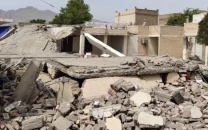

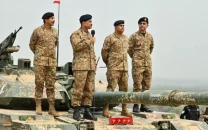
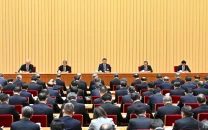
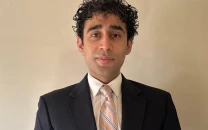
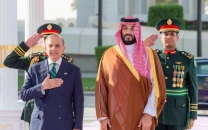
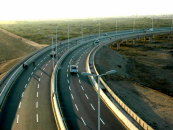

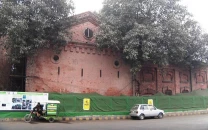

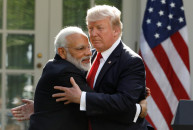
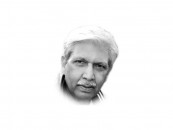




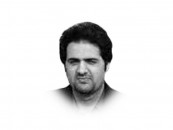
COMMENTS
Comments are moderated and generally will be posted if they are on-topic and not abusive.
For more information, please see our Comments FAQ